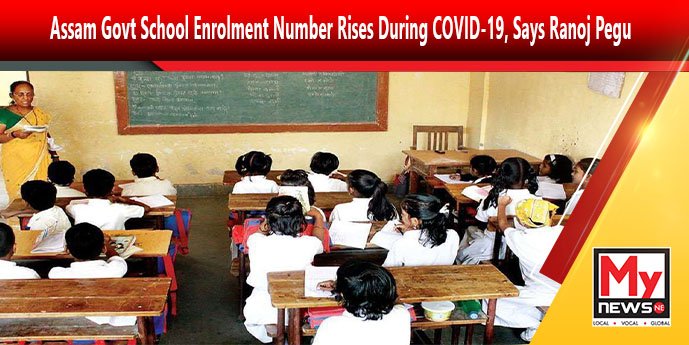Assam Govt School Enrolment Number Rises During COVID-19, Says Ranoj Pegu
Guwahati: Assam Education Minister Ranoj Pegu said that the enrollment in public schools has steadily increased throughout the past two years of the COVID-19 pandemic. This is primarily a result of the families’ financial strain, Pegu said.
The minister claimed in an interview with PTI that, despite the pandemic’s overall effects on schooling, many parents have chosen to enrol their children in government-run institutions due to the steady improvement in teaching standards.
He added that enrollment in government schools increased both during and after the outbreak. He added that there are various reasons for this growth, which is wonderful news for us.
He added that many parents were compelled to switch their children from private schools with exorbitant monthly fees to government institutions that were free because to the financial effects of the pandemic.
“Another component is a general improvement in the standard of instruction in public schools. Over the past few years, we have taken a number of initiatives to improve the quality, and the results are now becoming apparent “said Pegu.
The minister stated that despite fears of dropouts brought on by the epidemic, the Education Department’s analysis of enrollment data for all students in Classes 1 through 12 revealed a rise in the overall total number of students.
The total number of students in all government, aided, and non-private schools in Assam has increased by more than 63,000 during the 15-month COVID-19 epidemic period starting in September 2020, according to official data.
The overall number of students enrolled in government, assisted, tea garden-managed, and venture (locality-established) schools rose from 56,21,203 in September 2020 to 56,84,487 in November 2021.
According to Pegu, such an enumeration typically takes place in September of each year and will be followed this year by another census after two months.
He acknowledged that the finding suggests that many pupils were denied a formal education during the pandemic when the minister was questioned about the decline in the Class 10 state board exam pass rate.
“For us, it is a source of concern. In comparison to years prior to the pandemic, the pass percentage has not increased this year. We held unique remedial classes. However, we were unable to reach every school and every student “explained Pegu.
The minister claimed that because not everyone could access the online option, rural schools performed worse than urban ones.
“With this online teaching approach, we weren’t ready. The previous two years have seen the development of a large number of learning resources and instructional techniques. We are now ready for any circumstance,” said he.
The Board of Secondary Education (SEBA), Assam’s Class 10 matriculation test had a pass rate for 2022 of 56.49 percent.
Following the cancellation of the state board exams for Class 10 in 2021 due to the pandemic, the results were announced based on a grading scheme developed by an expert committee.
The passing rate increased dramatically from 64.8% in 2020 to 93.1% last year. According to the SEBA’s findings, it was 60.23 percent in 2019 and 56.04 percent in 2018.
With 72,097 new students being admitted over the course of the 15-month period, the primary sector, which includes Classes 1 through 8, has seen the biggest increase in enrollment.
In Assam’s non-private schools, the elementary division had 44,92,085 students in September 2020; by November 2021, that number had risen to 45,64,182.
During the time period under consideration, enrollment in higher secondary schools with Class 11 and 12 increased by 27,211, from 3,17,446 to 3,44,657 students.
The secondary classes, which are comprised of Classes 9 and 10, were the only area where enrollment fell.
From 8,11,672 students in November of previous year to 7,75,648 students in November of last year, there were a total of 36,024 fewer pupils in the secondary sections.
According to the official data, Classes 5, 6, 9 and 12 had decreases in student enrollment when compared to other standards, while the other classes saw a rise in new students.

